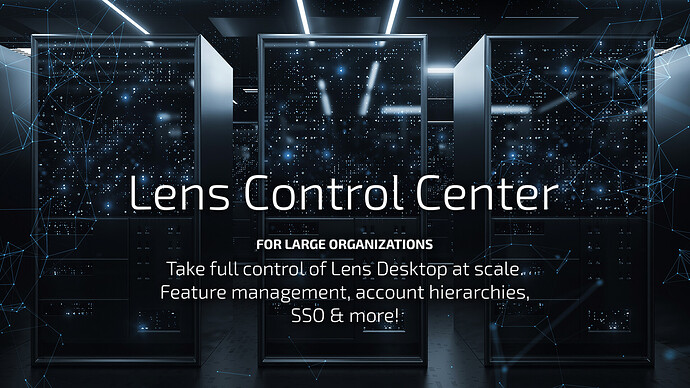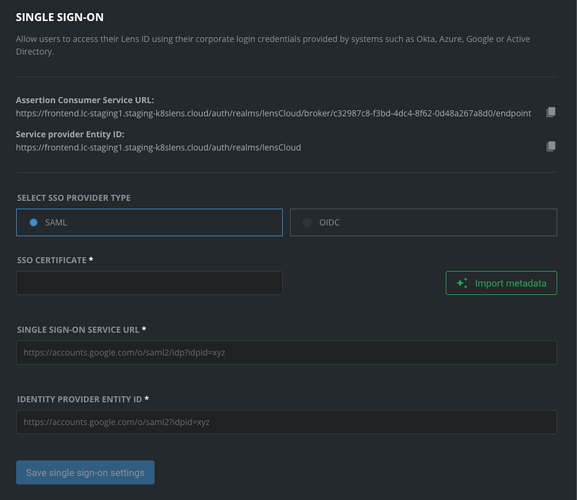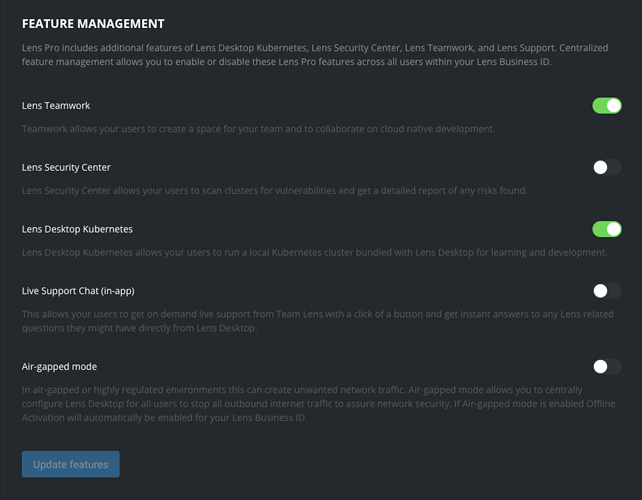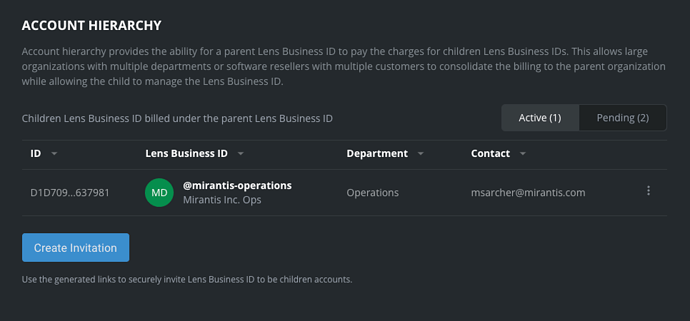Over 1 million users develop and operate their Kubernetes with Lens, the largest and the most advanced Kubernetes platform in the world.
Since launching our Pro version, thousands of organizations have come to trust Lens to remove complexity, speed up developer onboarding, and improve time-to-value and productivity for cloud native developers and operators. Without Lens users typically have to combine several tools such as command lines, kubectl, editors, dashboards, and web consoles creating confusion from all the context-switching and losing valuable time. Organizations not using Lens are missing out on developer productivity.
For individual users and small teams, managing a Lens Pro subscription is pretty straightforward. However, for larger businesses and organizations deploying Lens at scale has been more of a challenge. Today, we are excited to release Lens Control Center which enables large enterprises to seamlessly roll out Lens across multiple teams and organizations in a secure and centrally-controlled way.
Key features include integration with enterprise SSO, centralized features management, air-gapped usage to lockdown Lens to stop outbound internet connections, and hierarchical accounts for consolidated billing.
Lens Control Center Features
Single Sign-On - While Lens ID has supported SSO specifically for Google and Github, we have added support for SAML and OIDC. Organizations can now allow users to access their Lens ID using their corporate login credentials provided by other systems such as Okta, Azure, or Active Directory.
- Simplify user management and easily align with corporate security requirements.
- Authenticate with your corporate SSO to gain access to your Lens ID, reducing the risk of password fatigue, errors, and security breaches.
Centralized feature management - We are continuously building additional features to Lens Pro such as Lens Desktop Kubernetes, Lens Security Center, Lens Teamwork, and Lens Support. To date, these features have only been configurable by individual users which offer freedom and flexibility. However, there are instances when organizations desire centralized control to standardize configurations, ensure security, reduce support efforts, and save time for each user.
Centralized feature management allows administrators to enable or disable Lens Pro features across all users within their Lens Business ID ensuring a consistent experience.
- Ensure different teams have the features they need whilst remaining in line with corporate policies.
- Reduce user onboarding time with a unified configuration.
Air-gapped mode - Lens Desktop by default uses internet connections to provide features our customers love such as auto-updating, auto-installation of tools, updates from Helm repositories or CVE databases, or live support chats. However, for teams working in air-gapped or highly regulated environments this can create unwanted network traffic. Air-gapped mode allows administrators to centrally configure Lens Desktop to stop all outbound internet traffic to align with network security policies.
- Remove friction by complying with corporate network security policies
Account hierarchy - Account hierarchy allows departments within an organization to manage their Lens Business ID feature configurations separately while consolidating charges to a parent Lens Business ID. Initially available for subscriptions purchased via the Lens store.
- Streamline the management and procurement of Lens Pro across multiple internal teams or business units within the organization.
- Provides partners a consolidated overview for easier management of their customer accounts.
Ready to explore Lens Control Center?
Learn more about its capabilities and get in touch with our sales team here.
About Lens
Lens is the way the world runs Kubernetes. It’s lowering the barrier of entry for people just getting started and radically improving productivity for people with more experience. Users of Lens gain clarity on how their clusters and cloud native software stacks work. It helps people to put things in perspective and to make sense of it all.
Tens-of-thousands of businesses and over a million users develop and operate their cloud native workloads on Lens. It is built on open source, has 21k stars on GitHub, and is backed by a number of Kubernetes and cloud-native ecosystem pioneers. Lens is the largest and most advanced Kubernetes platform in the world.



